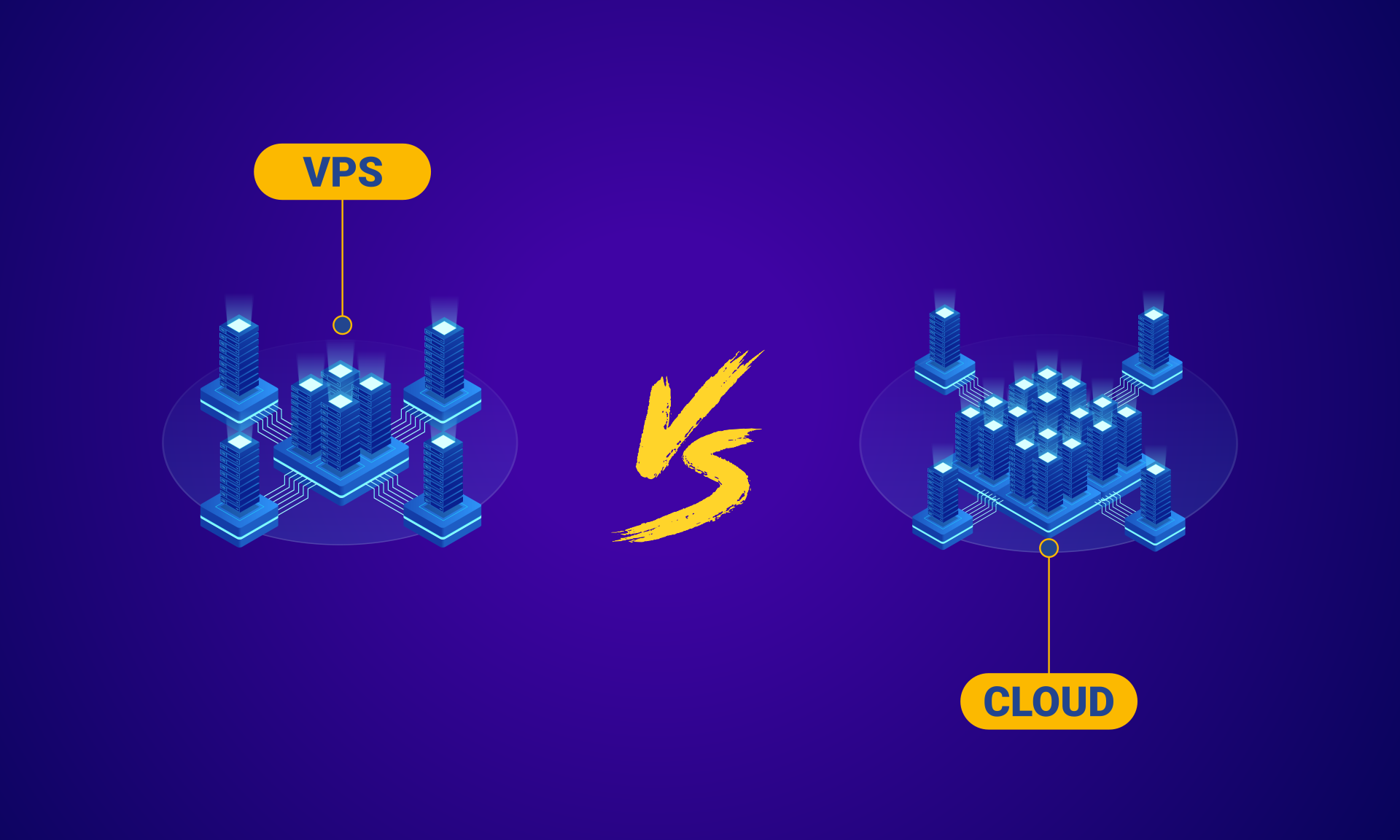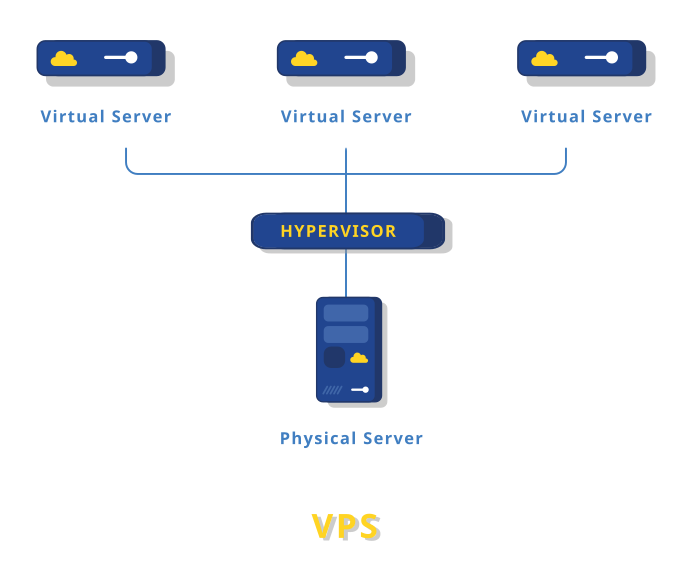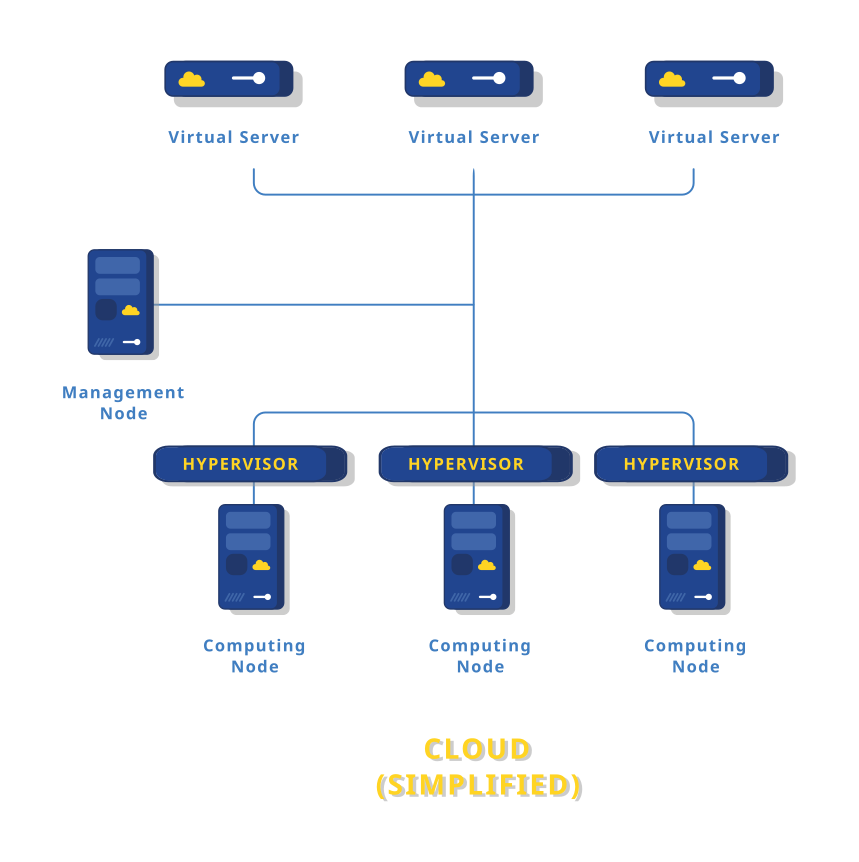Cloud Hosting
Traditional VPS vs cloud VPS | Storm Internet

I previously wrote about virtual private servers (VPS), and how they are created with a hypervisor which can either run on top of hardware (Type 1 hypervisor) or on top of an operating system (Type 2 hypervisor). Strictly speaking, however, a VPS is not a cloud server. While both ultimately provide a virtual machine, they differ on a few fundamental points.
Virtual Private Servers – Recap

Servers are powerful machines, equipped with more processing power (CPU), memory (RAM), and storage (either SSD or HDD) than most applications or software services need. The workloads of these applications or software services typically occur in bursts interspersed with periods of inactivity.
To make more efficient use of these resources, and so justify the cost of these machines, virtualization can be used to abstract hardware resources into a logical server with software called a hypervisor. In other words, a virtual machine, or a virtual private server (VPS), is created on the physical server. To operating systems, this virtual machine looks like a physical machine with physical computing resources.
When we create multiple virtual machines on a single physical server, multiple workloads can be run alongside each other, reducing those periods of inactivity, and thereby increasing efficiency.
Limitations of virtual private servers
Although equipment owners can make more efficient use of their big, powerful servers by creating multiple VPSs, this approach ultimately has a few limitations in production environments.
Equipment failure
Should hardware fail on the physical server, it will affect the operation of the virtual servers installed on it. The same is true for disaster scenarios that could damage or destroy the server, such as data centre fires or flooding. To prevent downtime and data loss in these scenarios, redundancies and effective disaster recovery strategies must be implemented.
Resource limitations
One key benefit of using virtual private servers is that resources are easily scaled to meet workload demands. However, resource availability is determined by what’s installed on the physical server. When demand outstrips availability, more resources will have to be added or virtual servers will have to be moved to a different machine. Over time, this can get expensive – not only in terms of hardware but also the time it takes to make these changes.
Limited provisioning
Operating systems have their minimum CPU, RAM, and storage requirements. With computing resources divided up between VPSs, this puts a limit on the number of virtual servers that can be provisioned on a physical server. Additional virtual servers will require more resources, another physical server, or a hybrid cloud solution.
What are cloud servers?

Imagine you have several physical servers. But, instead of using a hypervisor to create virtual machines on top of the hardware of each individual server, you pool the virtualised resources of those physical servers together.
You then add management software that can control the infrastructure, platforms, and applications in this environment of pooled resources. Now bring in automation which allows users to provision instances that can be used to install operating systems, and which also allows them to dynamically scale the resources available to these instances. This, in a nutshell, is a cloud virtual server, or simply a cloud server.
How cloud servers solve VPS limitations
Cloud virtual servers bring all the benefits of the cloud, which include better continuity, flexible disaster recovery options, and fluid operational scaling.
High availability
Because the cloud is an environment created by multiple individual physical servers, a hardware failure on one server won’t affect the others. This means there’s no single point of failure, which delivers better continuity than single-server VPS setups. A cloud environment can also span multiple data centres across the globe, which increases resilience against location-specific disaster scenarios.
Resource scaling
Given that resources are pooled in a cloud environment (and that more physical computing resources can be added without any service interruption), scaling is virtually limitless. More importantly, scaling can be done on demand – either permanently, or just during high-impact workloads.
Redundancy
With a single-server VPS set up additional virtual machines can be created as redundancies of each other, albeit within resource constraints. In a cloud environment, such constraints do not exist since creating additional virtual machines can be done within minutes. For added protection against disasters, these redundant virtual machines can be created on the same network in different geographical data centres.
Seamless migrations
Cloud virtual servers offer the additional benefit of seamless migration between different solutions. In a real-world scenario, this means that moving from a public cloud to a private cloud (or vice versa) solution can be accomplished without downtime or data loss.
Traditional vs Cloud VPS: Which should you choose?
While traditional virtual servers are at a disadvantage compared to cloud virtual servers in several areas, they do have a slight edge in terms of security: the scaling limitations of a physical server allow for only so many virtual servers, which results in a smaller attack surface compared to a multi-tenant public cloud solution that hosts many virtual servers. The caveat here is twofold:
- Hosts won’t disclose security policies or the particulars of other VPS tenants, which means security assessments will require expertise
- Hosts that do provide robust traditional VPS security will likely also take their cloud virtual server security seriously (e.g. by limiting the number of tenants on a cluster of physical machines), putting both VPS types on more or less equal footing
Of course, if you have a physical server lying around the office, then using it to create virtual servers for non-critical systems or testing purposes can improve productivity and control other hosting expenses. After all, virtualisation is all about making the most of what you already have.
Speak with a Storm Expert
Please leave us your details and we'll be in touch shortly
A Trusted Partner








